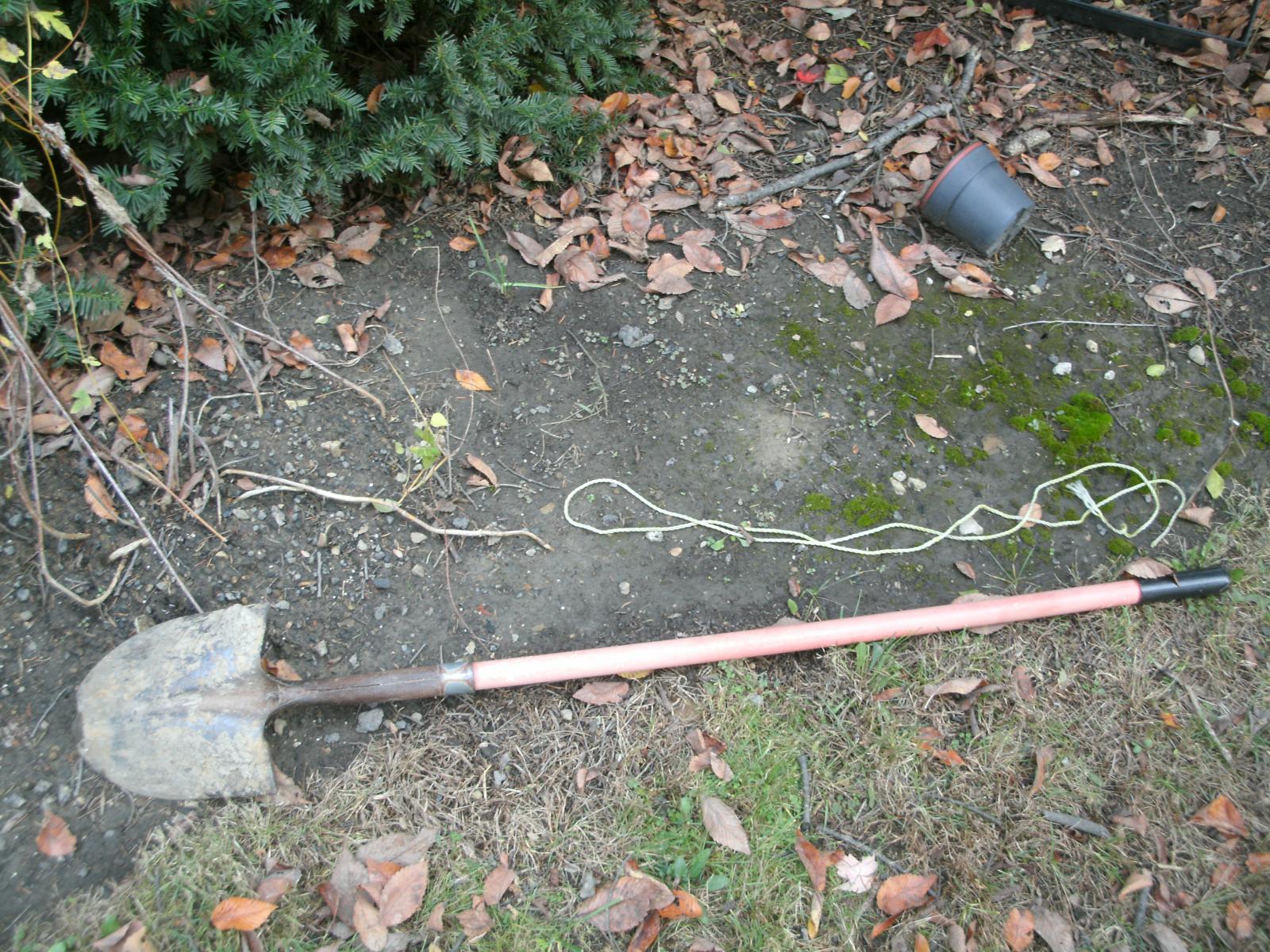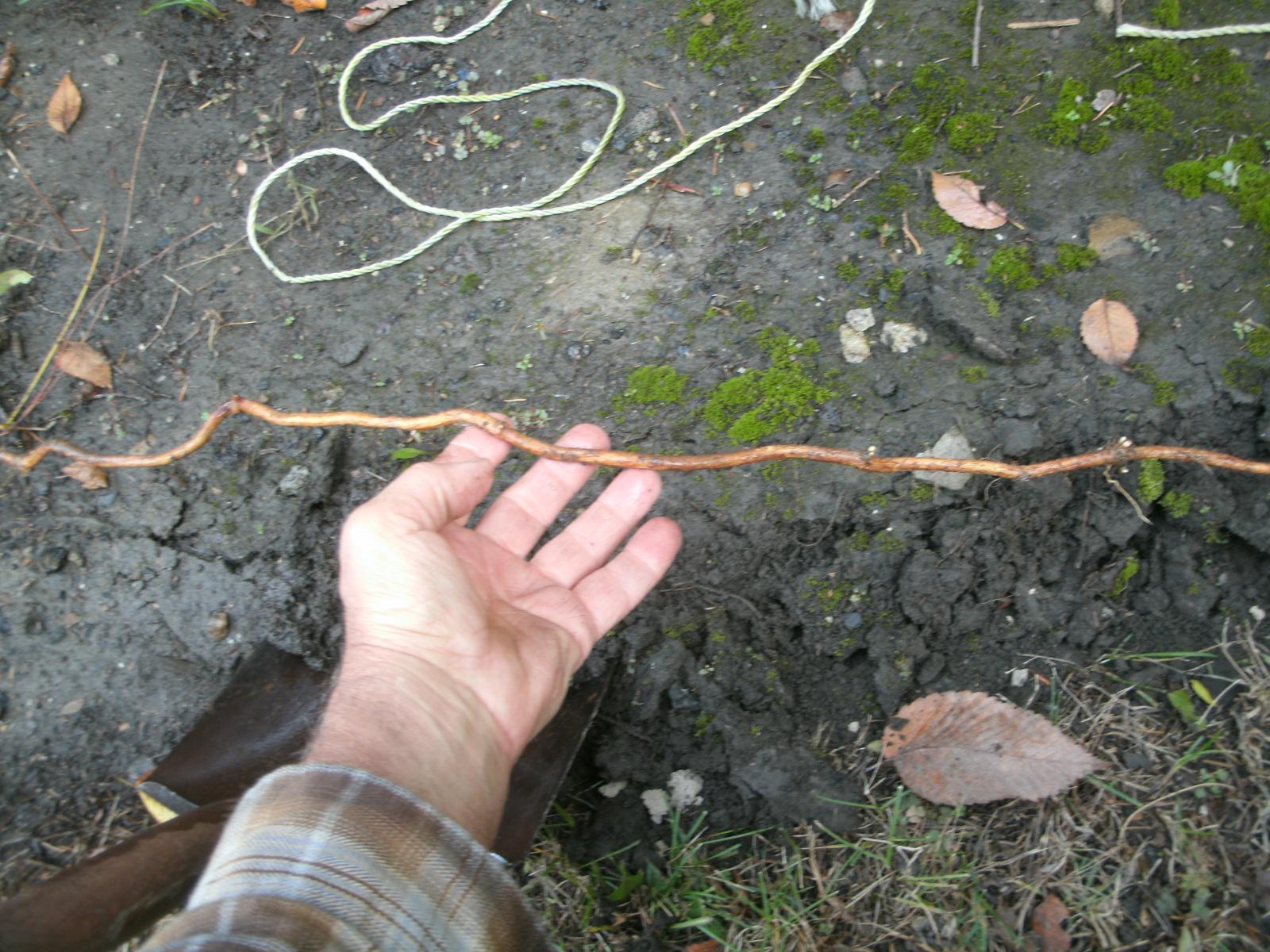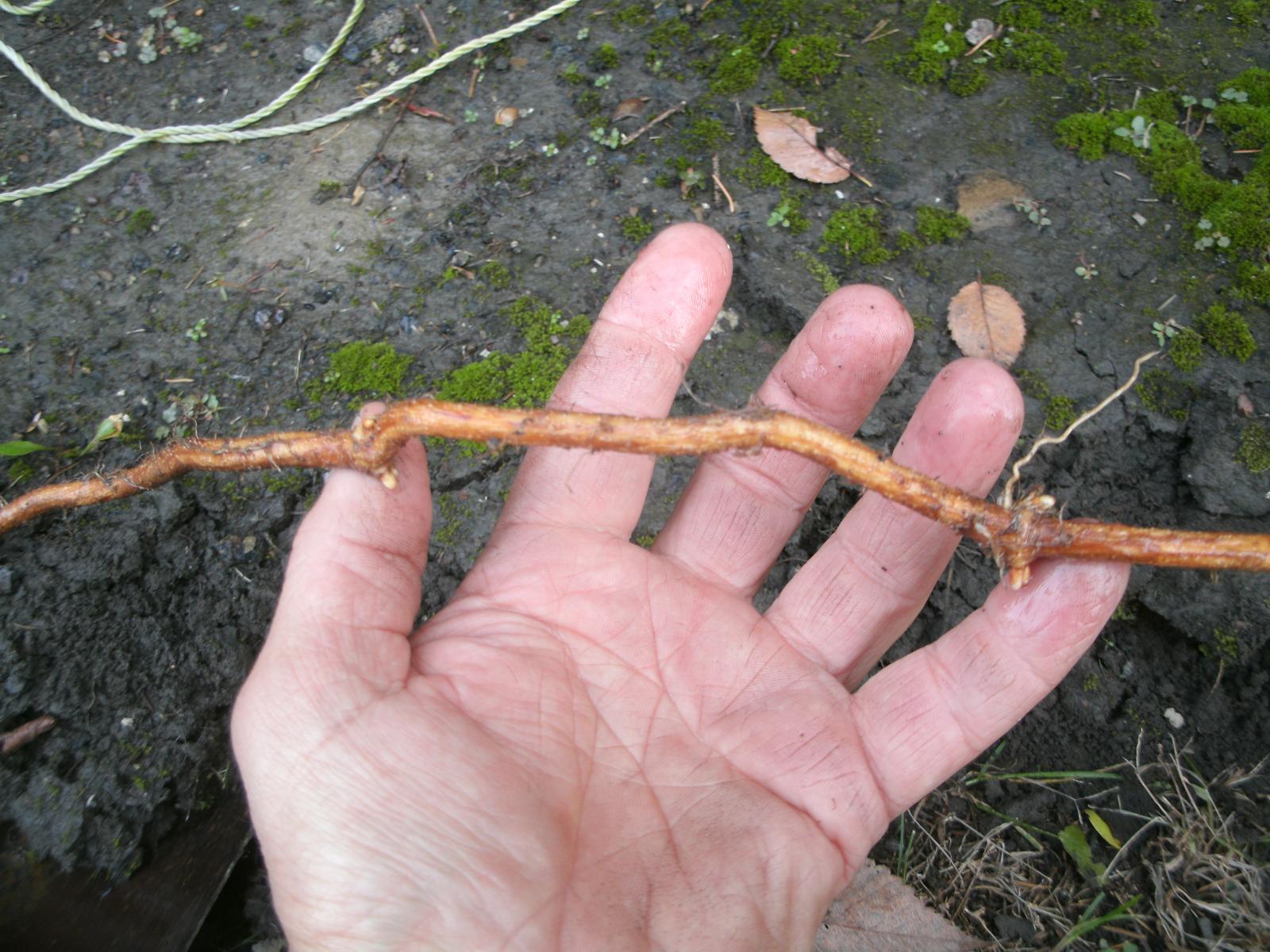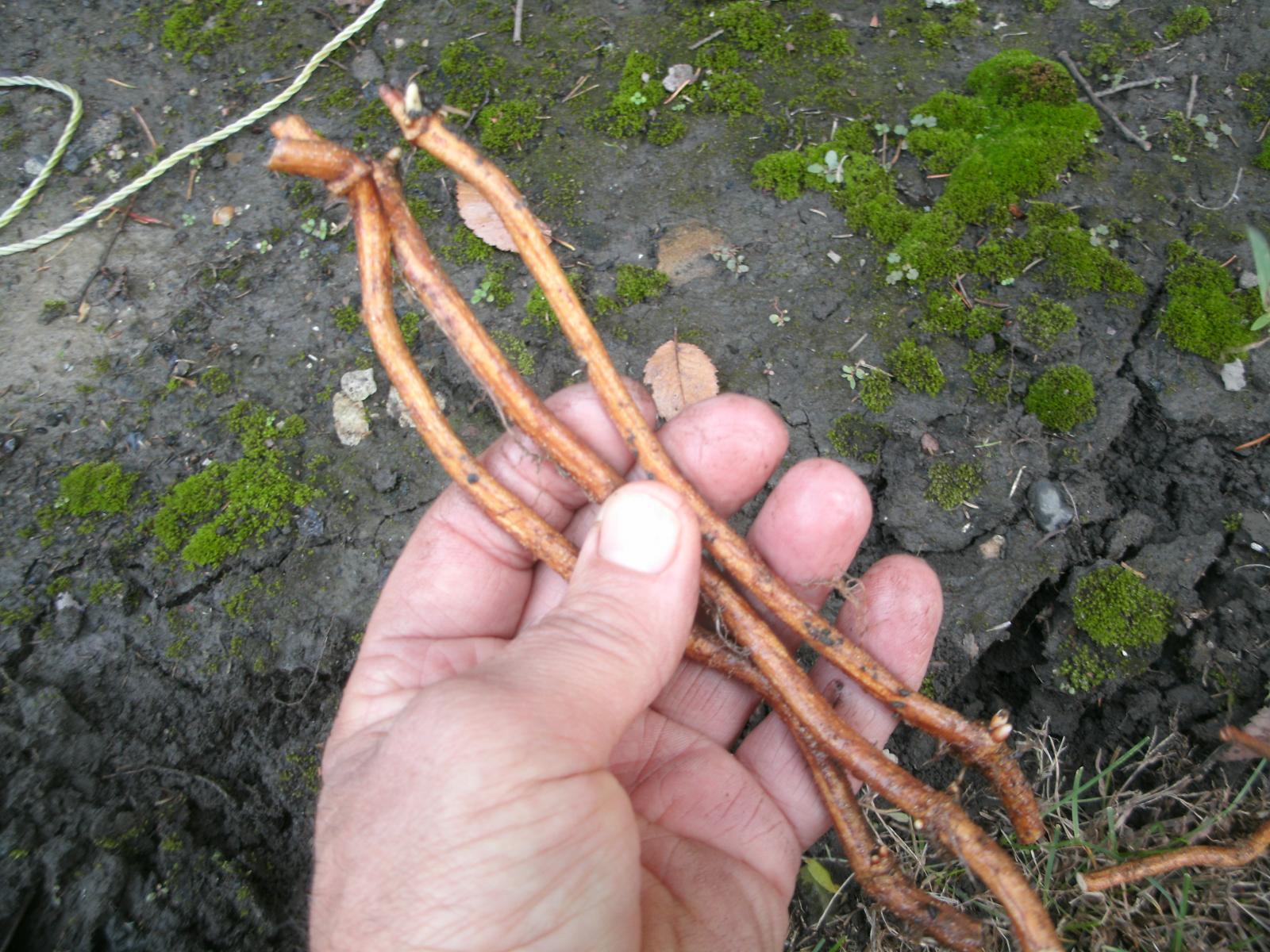For anyone who wants to increase the number of plants they grow without having to buy them, this is probably one of the easiest ways to do it. Essentially, what you're doing is to take one of the many shoots that emerge from your crown each spring, and instead of training it up a string or other support, basically just bend it over and cover it with an inch or so of soil or compost. Once covered, the growing tip will continue to elongate under ground and eventually pop up after a few inches. At this point, you can either train it up a support or you can continue to cover and bury the tip for how ever long you'd like, the longer the shoot grows under ground, the more nodes it will produce. The buds that are formed at each node would have turned into leaves if the shoot were to have been trained to climb rather than being buried.
The first pic shows the crown (to the left by the shovel head) and gives an idea of how long the buried shoot was as is indicated by the shovel and string placed on the soil surface. The growing tip that came up this past spring was bent over and covered with soil once it was a few inches tall and directed to the right.
The second pic just shows where it emerged from the crown and then was buried.
The third pic shows the actual rhizome that formed over the summer once it was unearthed. You can see that the stem kind of hardens off during this period (becomes a little bit woody) and the buds (eyes) that have formed at intervals of about 6-8 inches along it's length.
The 4th pic is a closer view of the buds.
And the last one shows that 3 rhizomes, each with 2 sets of buds have been cut. These will be stuck back in the ground and will be allowed to develop some feeder roots until the ground freezes in a month or so. They will resume growth next spring once the soil temp warms accordingly. Easy as pie!





The first pic shows the crown (to the left by the shovel head) and gives an idea of how long the buried shoot was as is indicated by the shovel and string placed on the soil surface. The growing tip that came up this past spring was bent over and covered with soil once it was a few inches tall and directed to the right.
The second pic just shows where it emerged from the crown and then was buried.
The third pic shows the actual rhizome that formed over the summer once it was unearthed. You can see that the stem kind of hardens off during this period (becomes a little bit woody) and the buds (eyes) that have formed at intervals of about 6-8 inches along it's length.
The 4th pic is a closer view of the buds.
And the last one shows that 3 rhizomes, each with 2 sets of buds have been cut. These will be stuck back in the ground and will be allowed to develop some feeder roots until the ground freezes in a month or so. They will resume growth next spring once the soil temp warms accordingly. Easy as pie!









